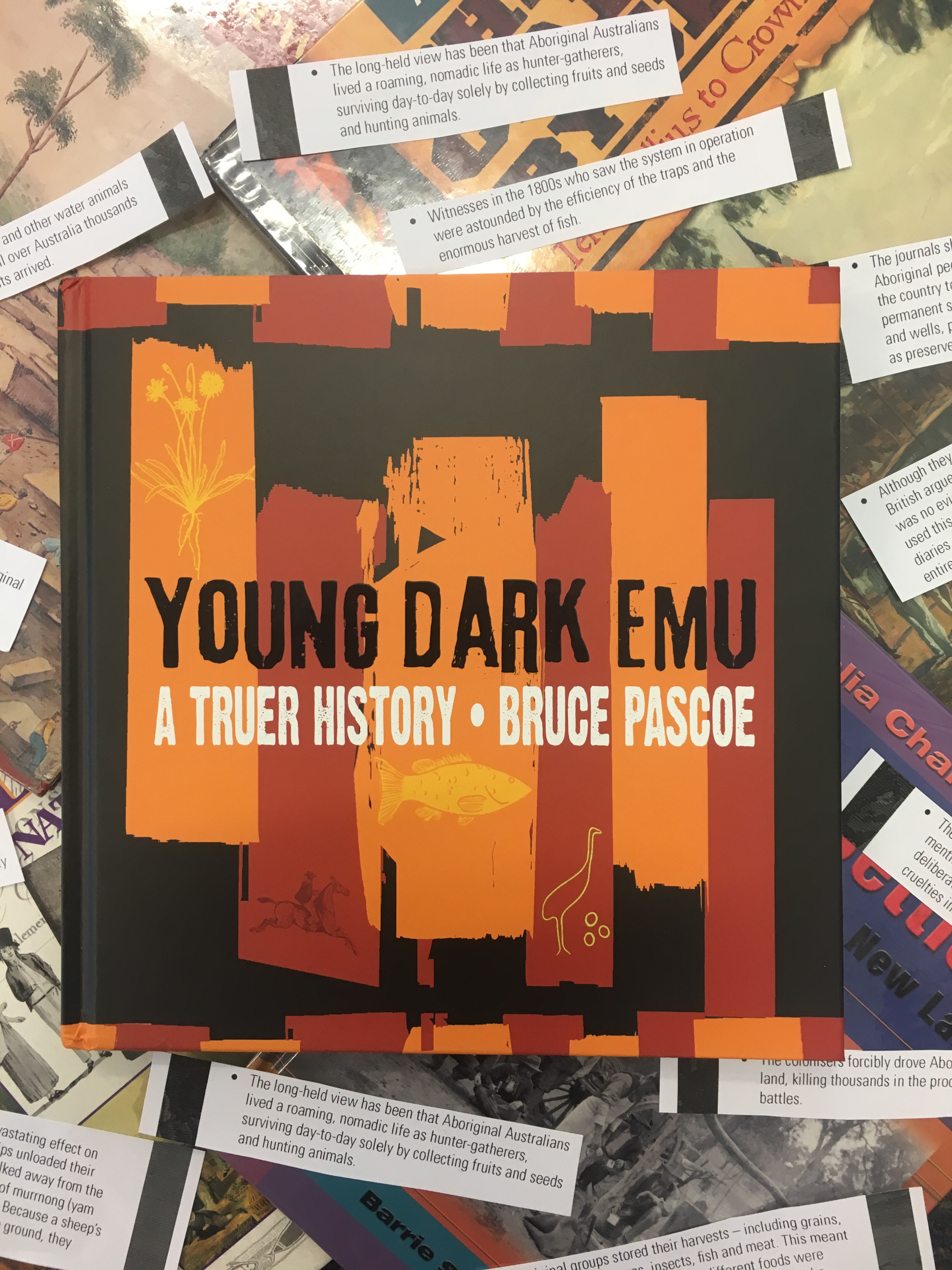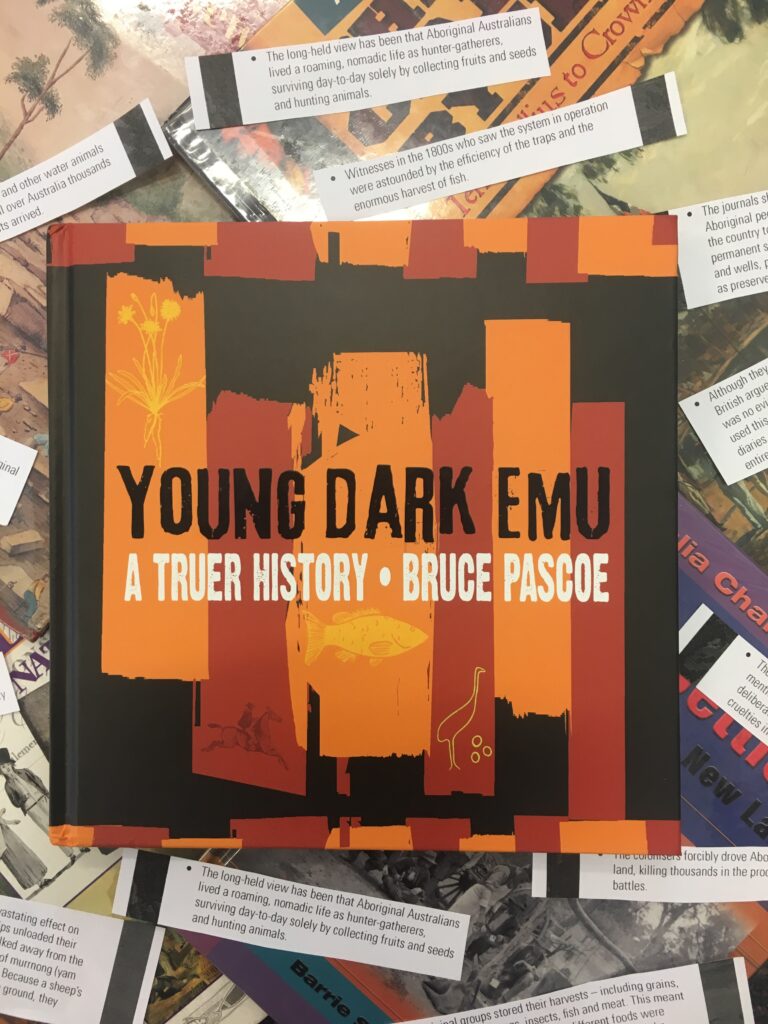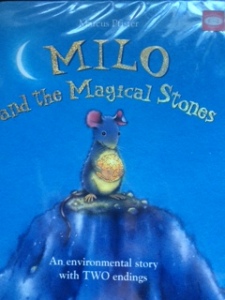ISBN: 9781925360844
Published by: Magabala Books, June 2019
Price: $24.99
The book, Dark Emu, received an array of awards for the hard truth that was told between the pages of Australia’s dark history. Most people who read this book were amazed at the mistruths that we had been told in history lessons at schools, in museums around our nation and most published books.

Since this book has been released there has been a gradual humming in the air for the need to share this truth. Australia Aboriginal people did cultivate the land, they did have permanent housing, they understood and cared for the environment and they were an important part of this land.
Bruce Pascoe has now released a junior version of Dark Emu – Young Dark Emu. A truer history.
This book is written with younger readers in mind. It includes many images that match in with the facts and add more information for younger readers to wonder about.
The book is grouped into different learning areas that can be focussed on. There are chapters that focus on the different states of Australia and how the Indigenous Australians lived.
Another focuses on food production and the devastating effects sheep had on the land.
Aquaculture is explained and the expansive Brewarrina fish traps are described and shown in photography.
Food storage, the importance of fire and sacred places are discussed in words that young people can relate to and understand.
The final chapter should leave a resonating sound in any reader – that is of the possibility of a sustainable future.
Australia needs to work towards growing more crops that are adapted to the harsh and dry Australian landscape. These crops will solve our water issues and soil degradation problems that we currently have. We need to ask our government to do more about this if we want a better future for all. We need to know that the land can give us what we need if we treat it well and learn from the traditional custodians of the land.
So what can you do with this book?
- There are media notes for Young Dark Emu. A Truer history and these contain 11 dot points that summarise issues in the book. Use these dot points as discussion starters for a whole class lesson. Once students have read their discussion point, ask them to search through current library resources that confirm or deny this fact. Justify why this viewpoint has been held for so long. Explain why this viewpoint needs to change.
- Create a way to share this information with other children your own age so they understand the real history of Australia.


